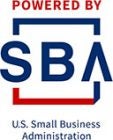How to Source Supplies and Labor in the Midst of Rising Tariffs
For small businesses in Rhode Island, staying competitive often means adapting quickly to shifting market conditions. Recently, rising tariffs have emerged as one of the most persistent challenges—affecting everything from material costs to supplier availability. When combined with ongoing labor shortages and inflationary pressure, it becomes clear that business owners must take proactive steps to protect their margins, maintain service levels, and future-proof their operations.
At the Rhode Island Small Business Development Center (RISBDC), we work directly with local entrepreneurs to strengthen their supply chains and workforce strategies. In this blog, we’ll share practical advice for sourcing supplies and labor in a volatile tariff environment—along with insights from RISBDC Associate State Director Manuel J. Batlle on how resilience beats reactivity every time.
The Tariff Impact on Small Business Supply Chains
Rising tariffs have significantly impacted how small businesses across the Ocean State make sourcing decisions. Business owners in specialty manufacturing, food importation, and retail distribution are particularly affected as landed costs climb and supply reliability becomes harder to guarantee.
These changes have prompted a range of responses:
- Shifting to suppliers in countries not subject to tariffs.
- Renegotiating terms with existing vendors.
- Increasing inventory levels to hedge against future price hikes.
If your business depends on imported goods or supplies, now is the time to reevaluate where and how you source your materials. RISBDC advisors can help you assess the long-term implications of these choices—not just the immediate cost impacts.
What Risks Should You Be Watching?
When sourcing from tariff-affected regions, cost is only one part of the equation. Small businesses must consider a host of additional risks:
- Volatile pricing: Tariff rates may change with little notice, disrupting your cost structure.
- Customs delays: Heightened compliance measures can slow down your deliveries.
- Political or economic instability: Suppliers in high-risk areas may become unreliable or financially unstable.
- Currency fluctuations: Exchange rates can further complicate price forecasting.
One key takeaway here: Think in terms of Total Cost of Ownership (TCO), not just unit price. A slightly more expensive domestic supplier may ultimately deliver greater reliability and fewer hidden costs.
Diversifying Your Supplier Base
Diversification is a powerful way to insulate your business from external shocks. Here’s a practical approach to broadening your supplier network:
- Conduct a spend analysis to identify dependencies in your current sourcing.
- Risk-rank existing vendors based on location, lead times, and financial health.
- Explore domestic options using resources like ThomasNet, MEP National Network, or local manufacturing associations such as RITIN.
- Run pilot tests with potential new suppliers before committing to large-scale contracts.
- Negotiate procurement flexibility into your agreements to allow for a mix of domestic and international sourcing.
These steps don’t just reduce risk—they often improve your negotiating position and increase your agility, so there is a long-term payoff.
Domestic Sourcing: Worth the Investment?
While the price tag for domestic goods may initially seem higher, the benefits can outweigh the costs:
- Shorter lead times mean faster fulfillment and better customer service.
- More control over quality and communication.
- Lower inventory costs due to just-in-time (JIT) capabilities.
- “Made in USA” appeal which can enhance your brand’s reputation.
- Fewer compliance hurdles related to customs and foreign trade regulations.
These advantages become even more meaningful when rising tariffs and shipping delays complicate overseas procurement.
Finding Trusted Local Suppliers
If you’re ready to look closer to home for suppliers or manufacturers, here are some strategies to get started:
- Use local procurement databases like the Polaris MEP supplier directory.
- Connect with state manufacturing associations like RITIN or local chambers of commerce.
- Attend regional trade shows and supply chain expos to meet suppliers face-to-face.
- Leverage RISBDC’s network of vetted vendors and partners.
- Schedule site visits and ask for references to ensure credibility and alignment.
Our advisors often guide clients through this vetting process, helping ensure they make informed, strategic decisions.
Navigating Labor Shortages Without Breaking the Bank
The labor market continues to present hurdles, particularly for small businesses looking to grow without overspending. To attract and retain talent in this environment, consider the following best practices:
- Offer advancement opportunities to enhance employee satisfaction.
- Embrace flexible scheduling or hybrid work options, especially for administrative roles.
- Launch employee referral programs to tap into trusted networks.
Additionally, RISBDC recommends alternative staffing models:
- Apprenticeships, in partnership with CCRI or RIMA, to build a pipeline of skilled workers.
- Part-time or seasonal hires to manage peak periods.
- Outsourcing non-core functions like IT, payroll, or warehousing.
These strategies can reduce fixed labor costs while maintaining flexibility.
Negotiating Better Supplier Terms in Uncertain Times
During periods of economic uncertainty, a collaborative approach to supplier negotiations can yield stronger partnerships and cost savings. Here are some tips:
- Leverage volume commitments to ask for discounts.
- Offer early payments to help suppliers with their cash flow.
- Bundle purchases to increase order value and strategic significance.
- Benchmark prices using public databases or competitor quotes.
- Share forecasts with your suppliers and ask for theirs in return—it fosters mutual trust.
“Building long-term, strategic relationships with suppliers is essential,” said Manuel Batlle, Associate Director of the RISBDC. “These relationships help buffer short-term disruptions and provide leverage when renegotiating under stress.”
Financial Tools for Tariff Impact Analysis
Unpredictable tariffs demand smarter financial planning. Here are tools that can help:
- Landed cost calculators like SimplyDuty or ImportYeti for accurate cost projections.
- Scenario planning using Excel or QuickBooks Advanced to model sourcing options.
- Contribution margin analysis to pinpoint product-level profitability.
- Rolling 12-month cash flow forecasts to anticipate and manage cash fluctuations.
Understanding the full financial implications of your sourcing decisions is critical to maintaining profitability.
Final Advice: Prioritize Resilience Over Bargain Hunting
If you take away one message from this post, let it be this: Don’t chase the lowest cost—build the strongest supply chain. By focusing on reliability, diversified sourcing, and long-term partnerships, your business will be far better positioned to withstand market fluctuations.
“Resilient businesses are not the ones that spend the least—they’re the ones that prepare the best,” Batlle said.
Get Personalized Guidance from RISBDC
The Rhode Island Small Business Development Center offers free, one-on-one advising to help you strengthen your supply chain, build your workforce, and grow your business. Whether you need help assessing vendors, understanding tariff risks, or managing cash flow, we’re here to support your success.
Contact us today to schedule a consultation with an expert advisor.




